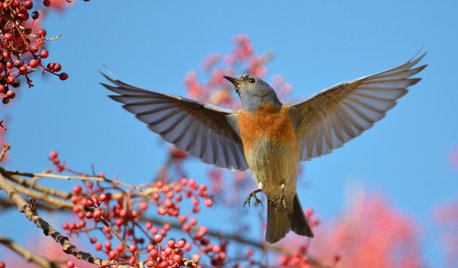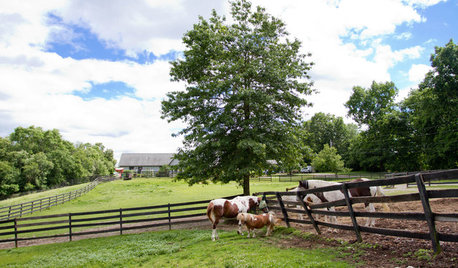World's biggest collection of berries to be bulldozed
franktank232
13 years ago
Related Stories

GARDENING GUIDESHow to Bring the Joy of Bluebirds to Your Garden
Attract these beautiful songbirds with nesting habitat and food sources, including berry-producing trees and shrubs
Full Story
HOUZZ TOURSMy Houzz: Modern Urban Sanctuary in Dallas
Abundant surrounding nature forms a backdrop for modern architecture and contemporary furniture in this Texas home
Full Story
FEEL-GOOD HOMESimple Pleasures: Make Do and Mend
Experience the satisfaction of fixing, repurposing and creating things yourself around the home
Full Story
GARDENING FOR BUTTERFLIESGardening for the Bees, and Why It’s a Good Thing
When you discover how hard bees work for our food supply, you may never garden without them in mind again
Full Story
HOUZZ TOURSHouzz Call: Show Us Your Farmhouse!
Bring on the chickens and vegetable patches. If your home speaks country, it might appear in a featured ideabook
Full Story
EARTH DAYThe Case for Losing the Traditional Lawn
Work less, help the environment and foster connections by just saying no to typical turf
Full Story
FALL GARDENING6 Trees You'll Fall For
Don’t put down that spade! Autumn is the perfect time for planting these trees
Full Story
CITY GUIDESTravel Guide: Montreal for Design Lovers
Two insiders' picks for design-minded hotels, restaurants and much more in Canada's cultural capital
Full Story
LIFEDo You Live in Your Childhood House?
Tell us about the home you grew up in — whether you live there now or not — and share your pictures!
Full Story
FEEL-GOOD HOME21 Ways to Waste Less at Home
Whether it's herbs rotting in the fridge or clothes that never get worn, most of us waste too much. Here are ways to make a change
Full StorySponsored
Your Custom Bath Designers & Remodelers in Columbus I 10X Best Houzz
More Discussions







ericwi
franktank232Original Author
Related Professionals
Carlisle Landscape Architects & Landscape Designers · Beavercreek Landscape Architects & Landscape Designers · Oconomowoc Landscape Architects & Landscape Designers · Surprise Landscape Contractors · Wakefield Landscape Contractors · El Reno Landscape Contractors · Forest Hills Landscape Contractors · Indianapolis Landscape Contractors · Matteson Landscape Contractors · Oviedo Landscape Contractors · Paterson Landscape Contractors · Pompton Lakes Landscape Contractors · Vacaville Landscape Contractors · Vallejo Landscape Contractors · Crowley Landscape Contractorsswaine
gtippitt
gonebananas_gw
gtippitt